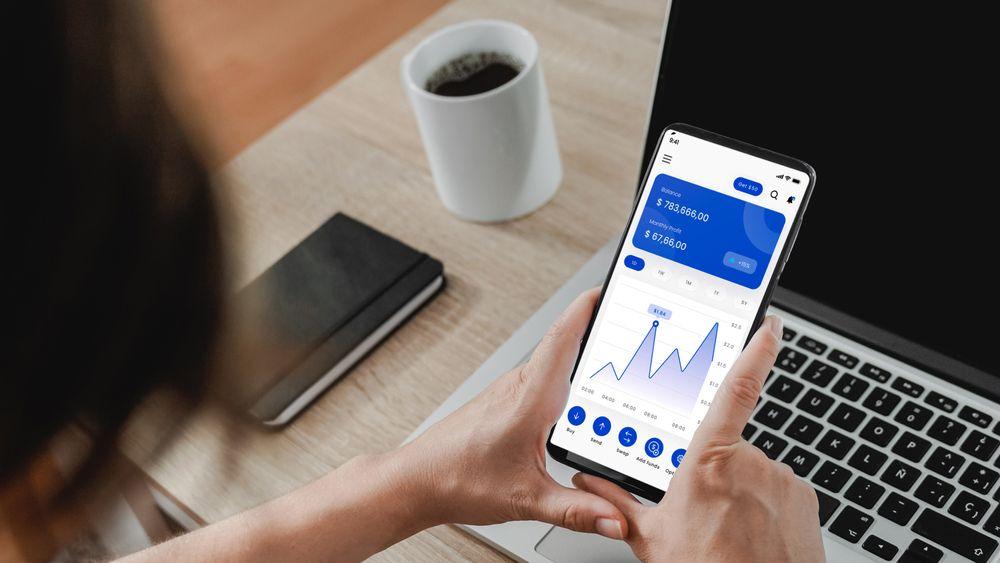Ever wondered if there is an easier way to complete transactions without having to deal with online wallets, banks and third party aplications? Well it’s possible thanks to blockchain. To simplify transactions the concept of cryptocurrencies came into existence. Cryptocurrencies are a form of digital or virtual currency that run on a technology known as blockchain.
And what does every successful blockchain solution have in common? Transparency, accuracy and validation of individual contracts and transactions.
In this blog post we will delve deeper into blockchain testing, explain what it is, look at the different types of testing, and discuss the most common challenges software testers face when testing blockchain applications.
What is blockchain?
A blockchain is a digital ledger of Information and transactions that’s being duplicated across the blockchain in the form of a hash tree. It is a system that contains a block which has a list of data chained to another list of data that makes it difficult or impossible to alter, hack, or cheat the system.
However, blockchain technology is an emerging field with a lot of market dynamics, new products, vendors, and PoVs that are published and released in the market on a daily basis. As a result, it suffers from a lack of standardization in the testing methodology of Blockchain solutions.
How to test a blockchain application?

All software testing techniques can be applied to blockchain testing. For example, if you are familiar with API testing, integration testing, and performance testing, then this is all valuable knowledge that you can use while testing a blockchain application. However, blockchain testing is more technical, as you will not deal with a clear user interface that you can click through in order to test the different testing approaches. Instead, you will usually come across a poor user interface or no interface at all. What makes blockchain testing different from other types of testing is the priority, tooling and the focus during the process.
Implementing different types of testing on blockchain applications
There are different types of software testing that you can perform to test different aspects of blockchain applications:
Functional testing
Functional testing is used in blockchain testing to make sure that different functional components of the blockchain application are working as intended.
API testing
As blockchain applications rely on APIs for seamless communication between different systems within the blockchain ecosystem, API testing is important to see whether the right information is being sent and received across systems.
Integration testing
Blockchain applications are made up of multiple components and for this reason integration testing is used to check if all the different components are integrated and working together properly.
Performance testing
Performance testing allows you to test the network latency based on the block size, network size or the transaction size. Namely, as blockchain applications often involve a large number of transactions that need to be processed quickly, performance testing is the best way to ensure it can handle transactions quickly and securely.
Security testing
Performing security testing on your blockchain application will help you to prevent security breaches and malicious attacks, while keeping sensitive data safe. With security testing you can discover any security vulnerabilities your blockchain solution may have before they can be exploited by attackers.
Smart contract testing
Smart contract testing is specific to blockchain applications that have a smart contract, which is a self-executing program that automatically executes an agreement when previously specified preconditions are met. This type of testing is important to ensure that the smart contract is executed as intended and can be trusted to do so without human involvement.
Challenges software testers face during blockchain testing

- Understanding blockchain technology.
Unfortunately, blockchain can be confusing and is not everyone’s cup of tea. It is not easy to learn or understand, especially considering the technology is constantly evolving. So software testers need to be interested in blockchain in order to test such applications correctly and efficiently. - Lack of blockchain testing tools.
As blockchain systems are still at an early stage and undergoing rapid changes, there are not as many reliable blockchain testing tools as there are for other types of testing. Nevertheless, we can see the rise of blockchain solutions and an increase in their usage, so hopefully we will see the number of blockchain testing tools increase too. - Defining a test strategy.
Because blockchain has so many layers, it’s crucial for software testers to have a defined testing strategy as well as good knowledge of blockchain, of course. To develop a foolproof test strategy, it is highly recommended that you consult developers or any team members that are involved in the project. This will help you decide what the critical parts of the application are and focus on them. - Integration testing.
Due to the complexity of blockchain solutions and because of the many components that work together, integration testing can be quite challenging. To perform integration testing effectively, software testers might need to use different tools and setups to test the blockchain solution from an end-to-end perspective or from a different component level. - Load and performance testing.
The problem with performance testing is that there can be lack of standardization, lack of technical, operational, and legal competence, or team members may lack an in-depth knowledge of the blockchain technology. To perform load and performance testing on blockchain applications, software testers should understand how the solution works inside out, have a suitable testing environment and access to various resources (different networks, devices, etc.), and be able to determine the appropriate metrics, tools, and methodologies to use.
Conclusion
When it comes to blockchain testing, the best way to test your blockchain solution and overcome challenges is with effective team communication and continuous learning. Make sure you communicate with your team on a daily basis so that you have all the latest information regarding the solution.
Before you start testing, be sure to make a plan that will include what types of testing you will perform and which tools will make testing easier for you and provide you with the most accurate results. Additionally, considering that blockchain technology can be a part of a very fast paced environment and requirements might change all the time, we suggest you invest in continuous learning to upgrade your skills and increase your knowledge in the field. This way, you will always stay on top of trends and discover new ways to improve and accelerate blockchain testing.
Do you have a blockchain application and need help testing various aspects of it? Contact us with your project details to learn more about our blockchain testing services and how we can help you.



